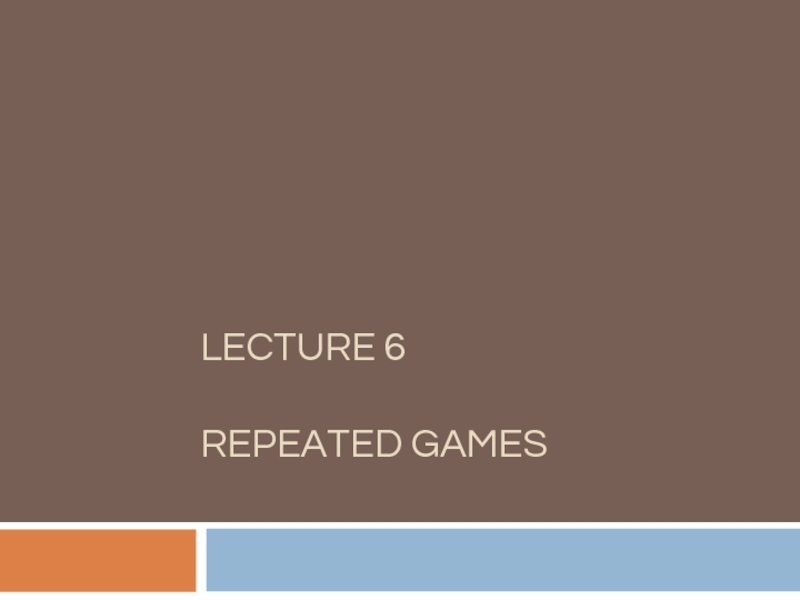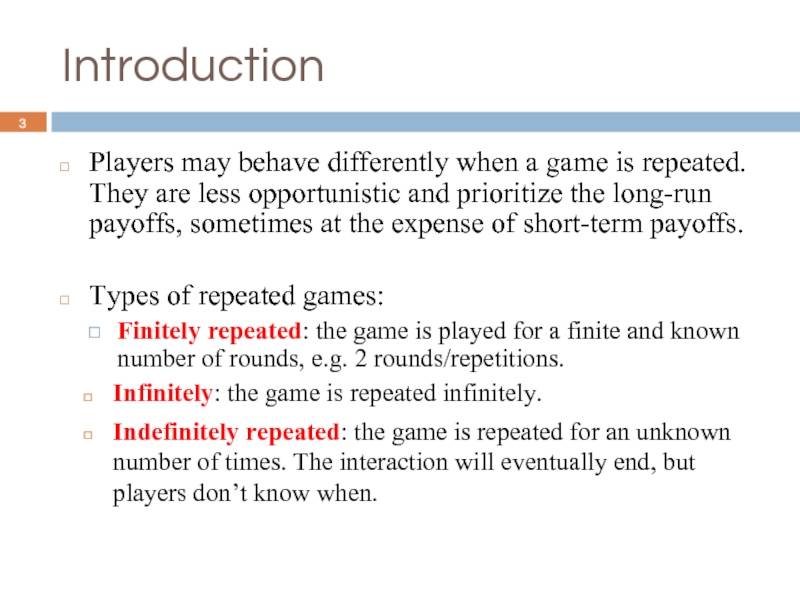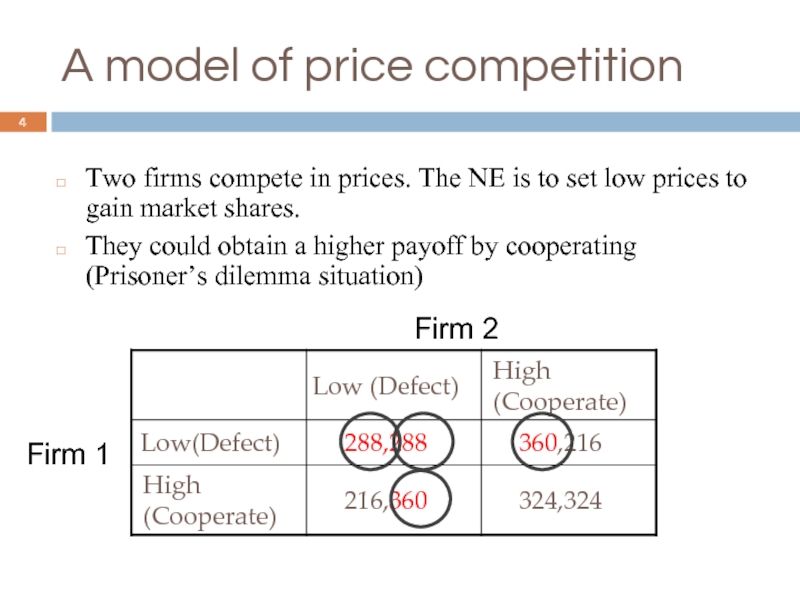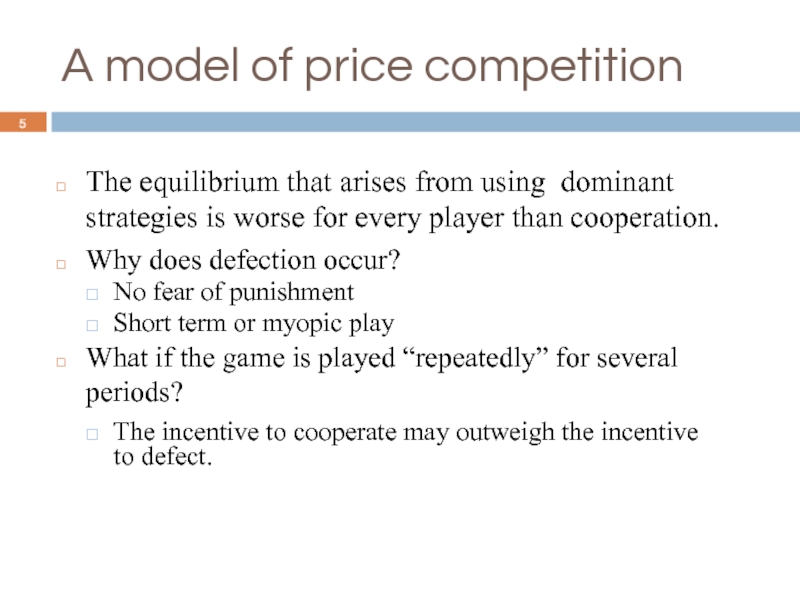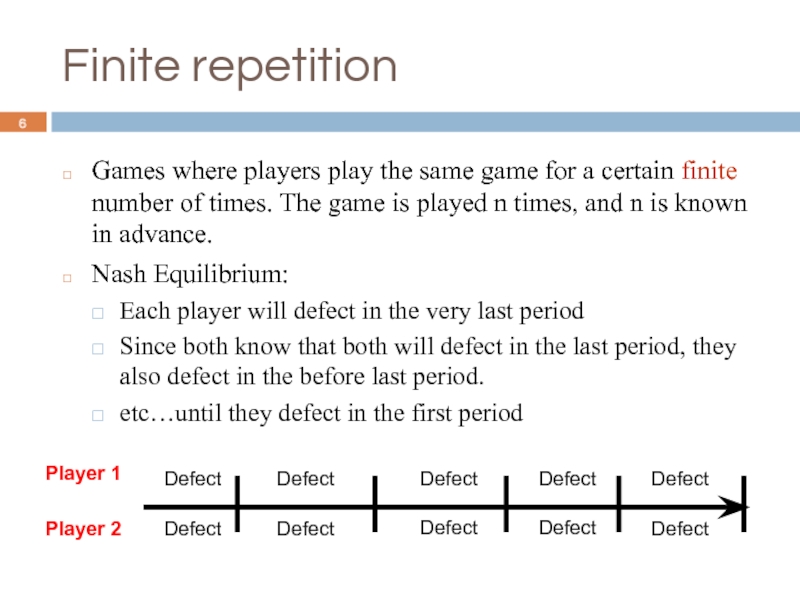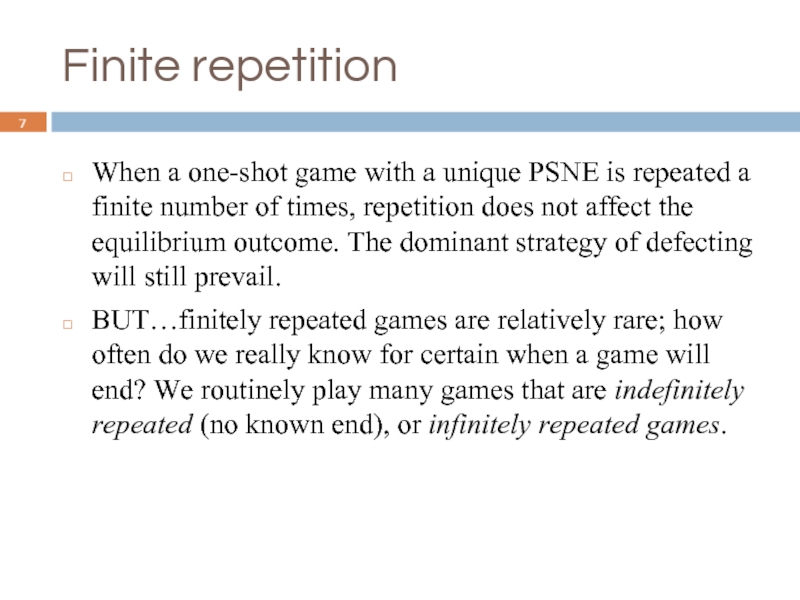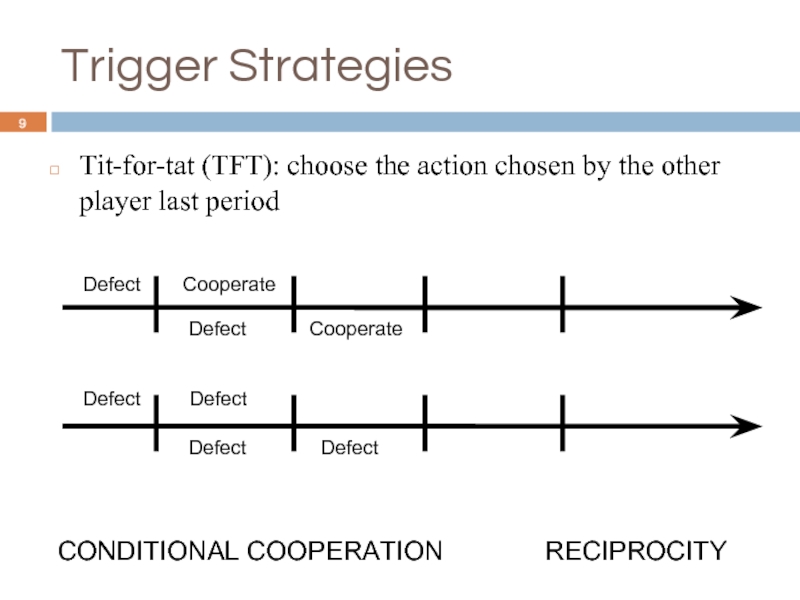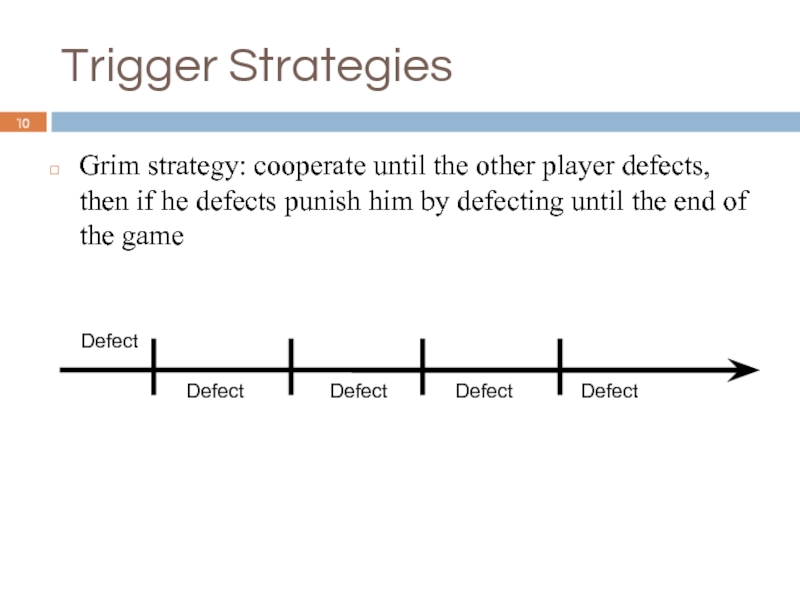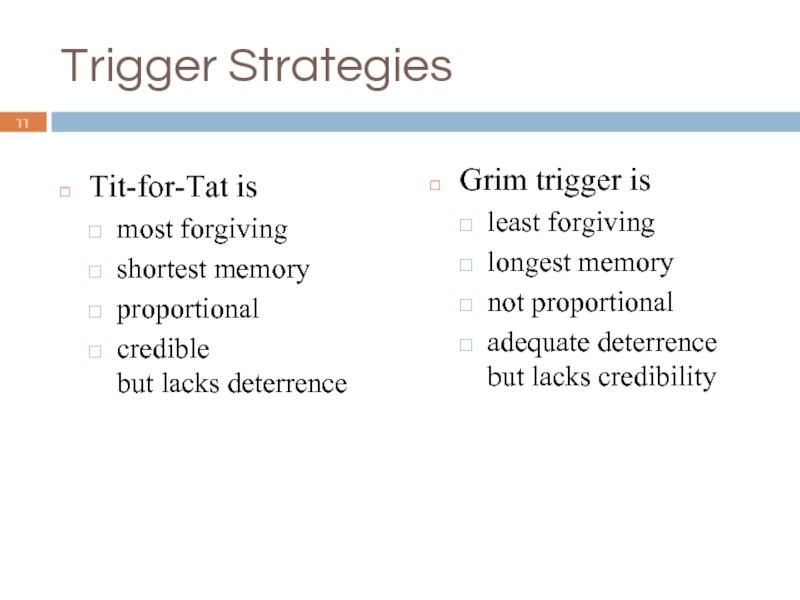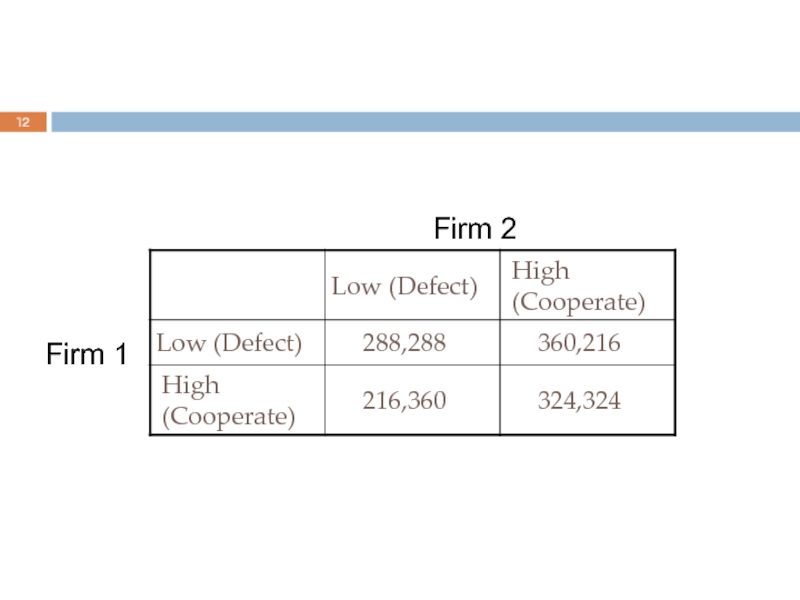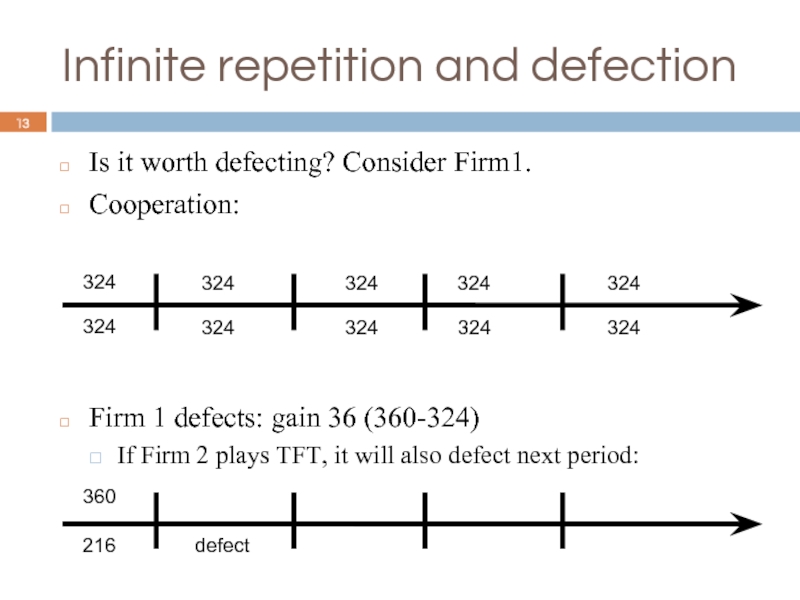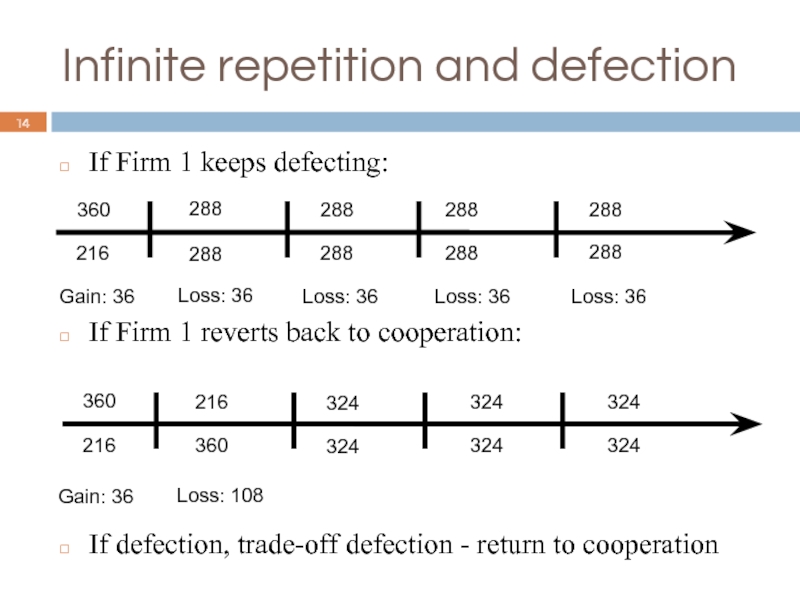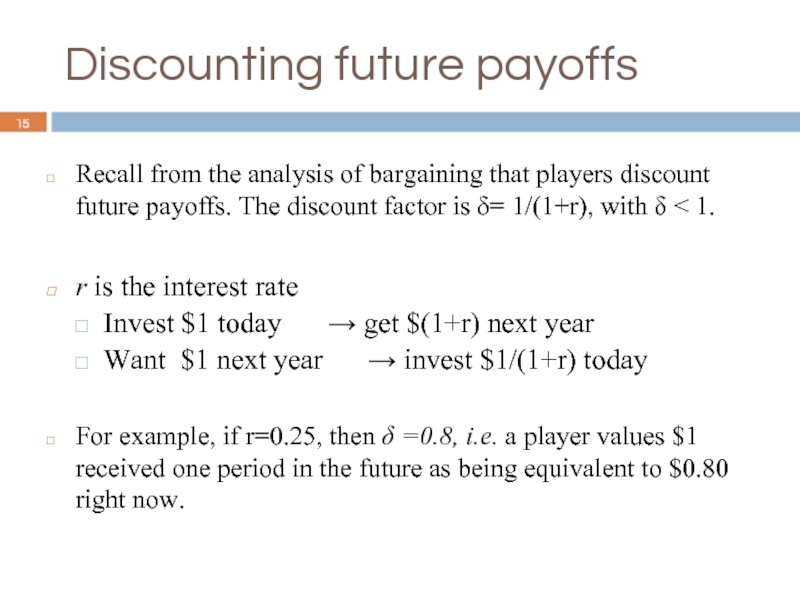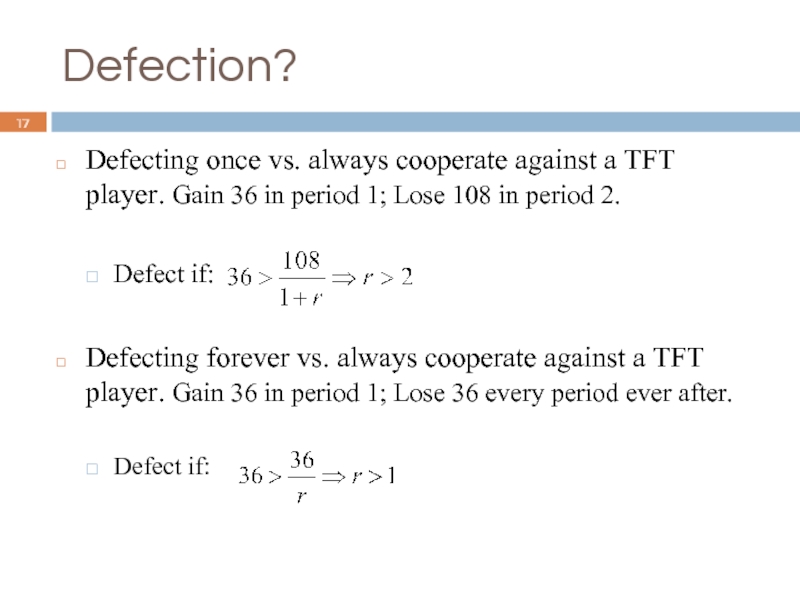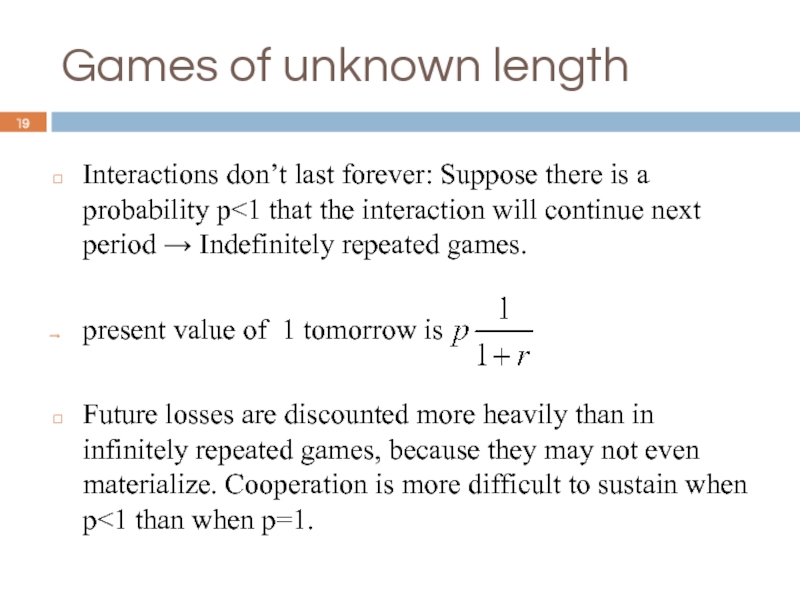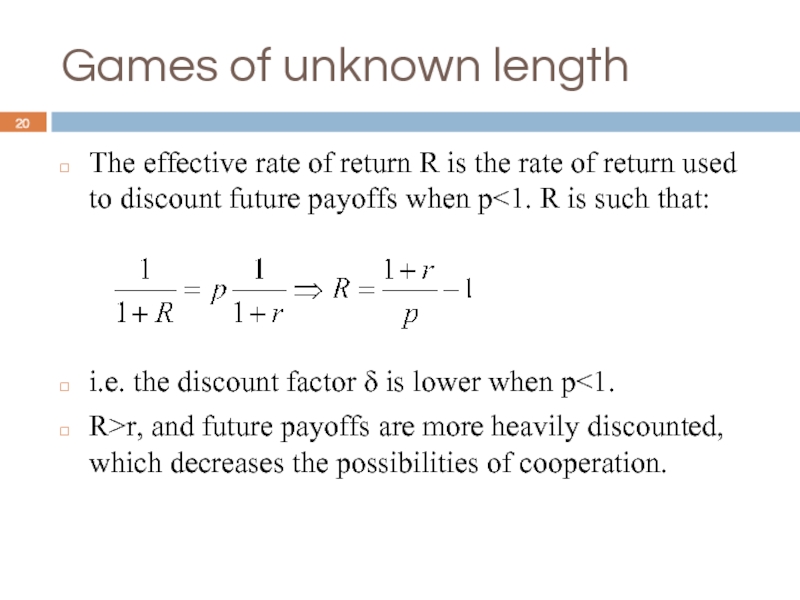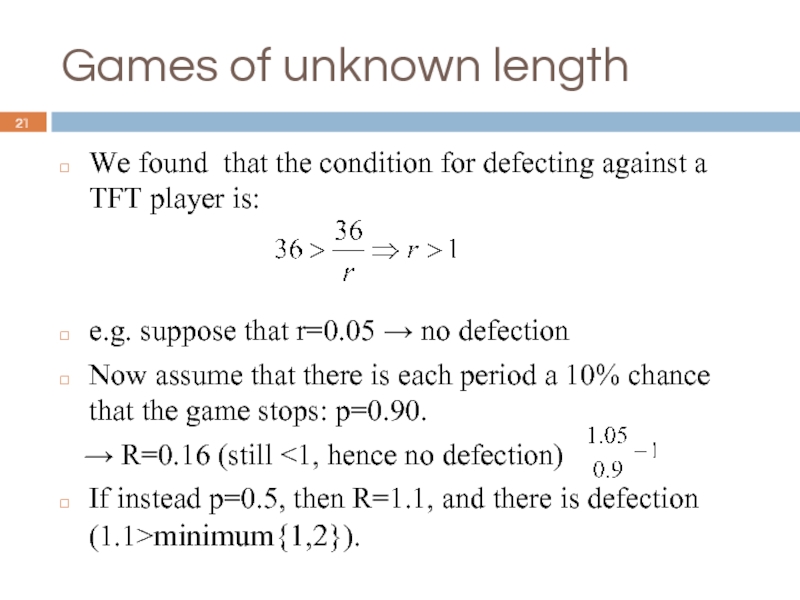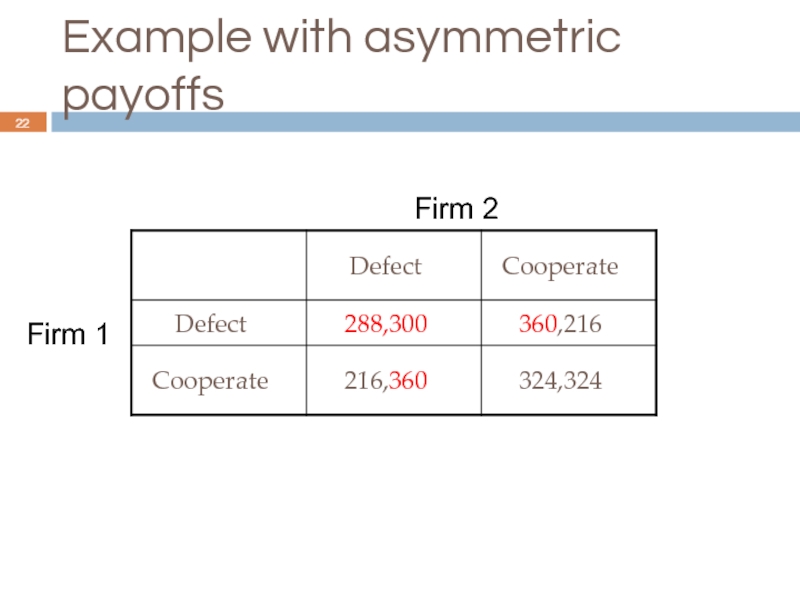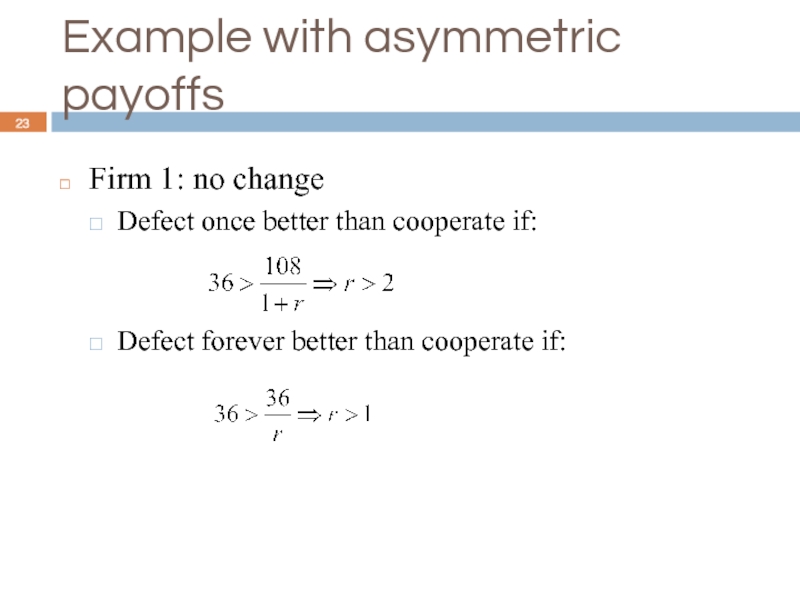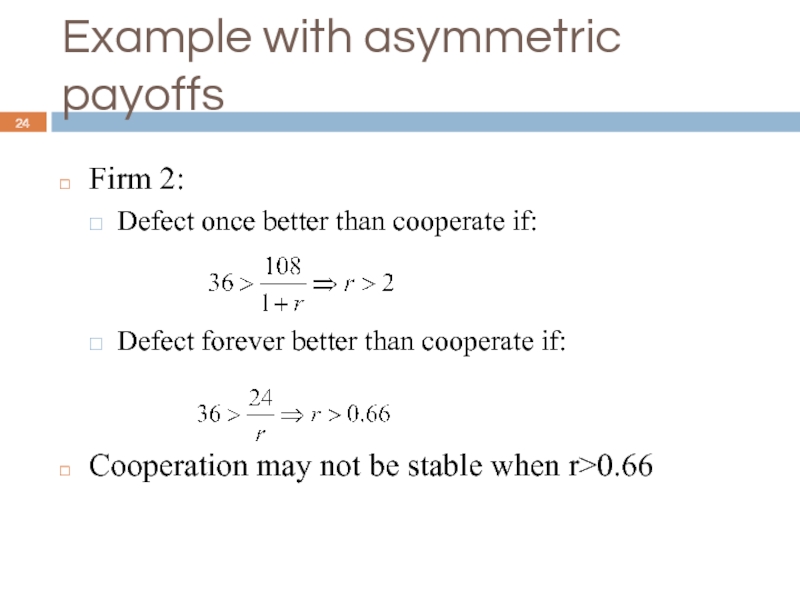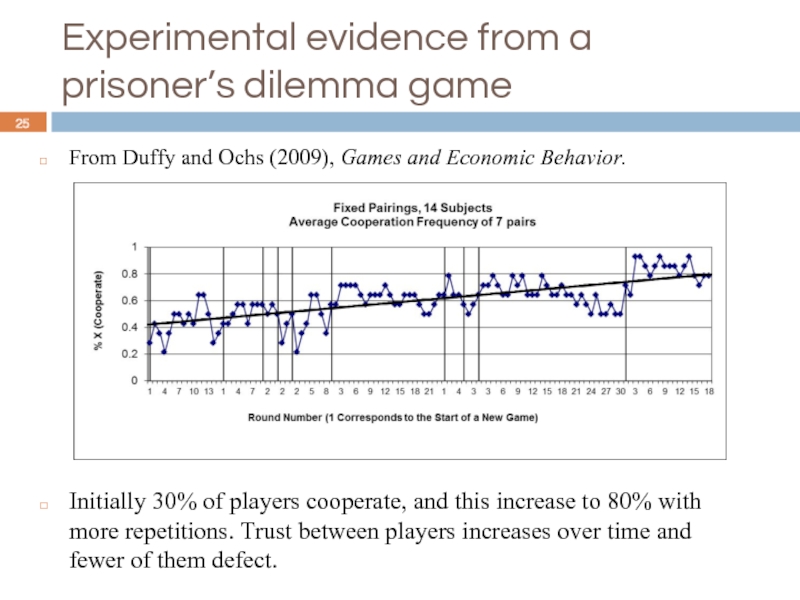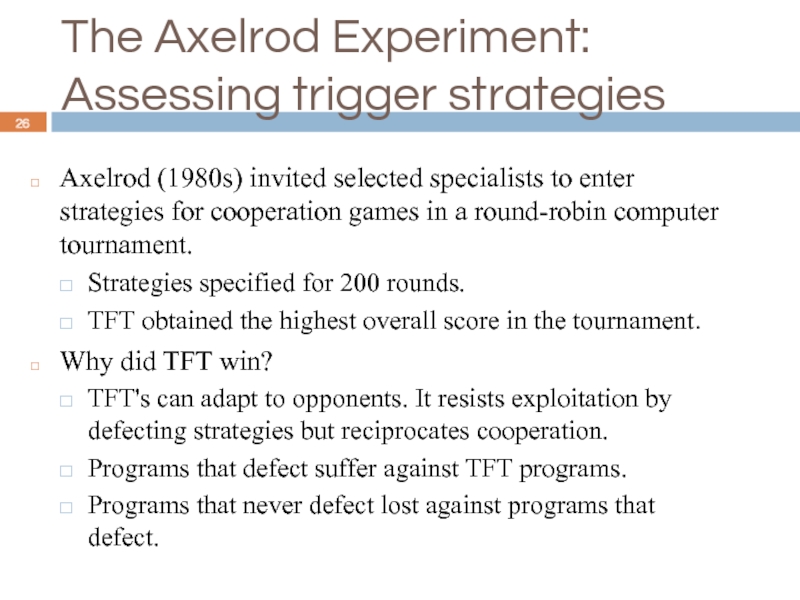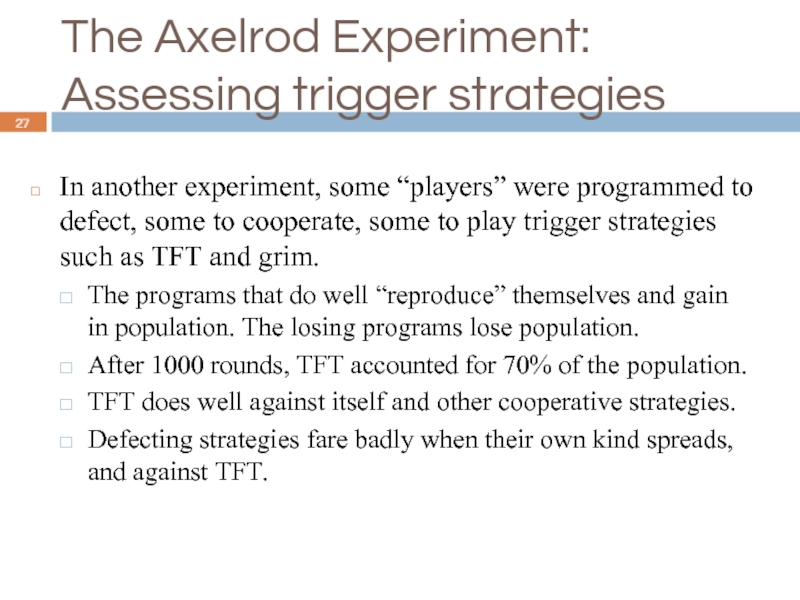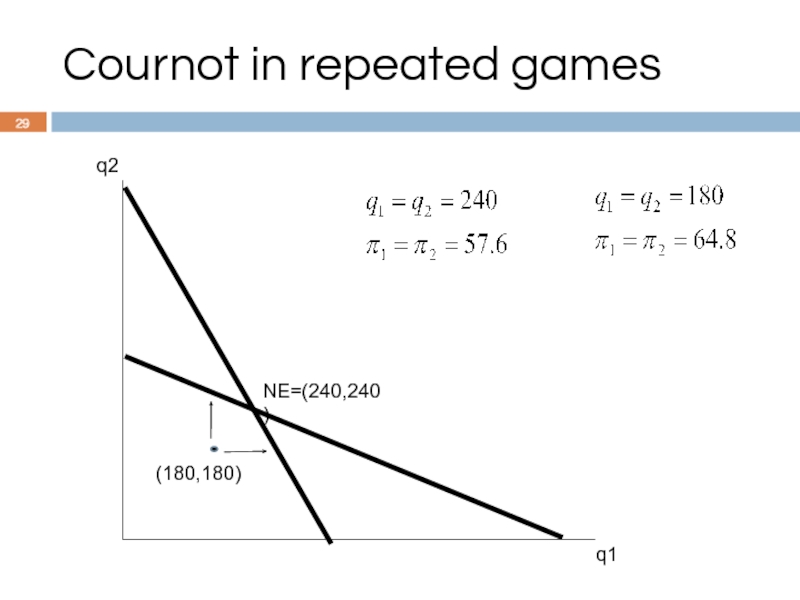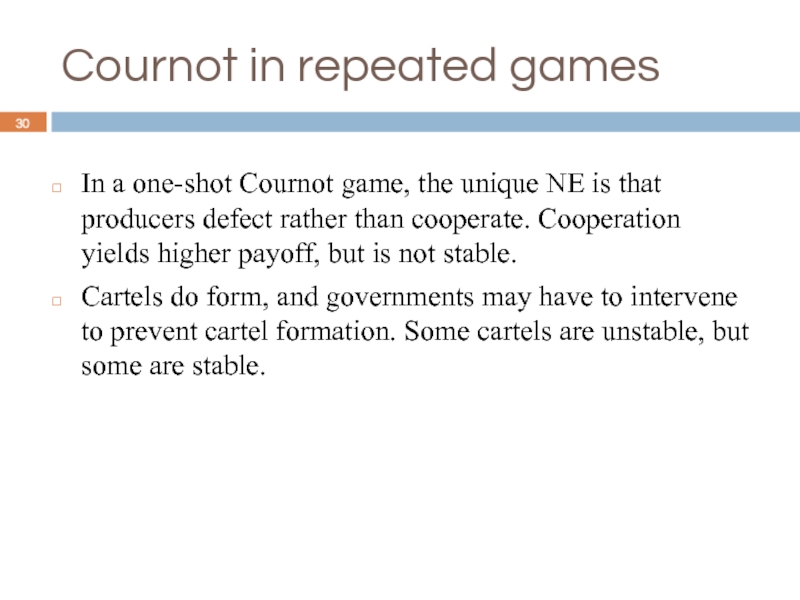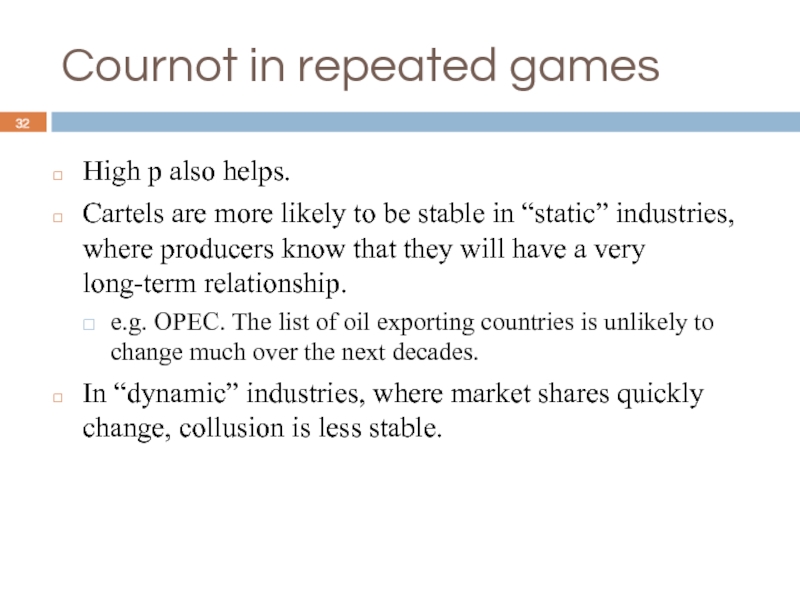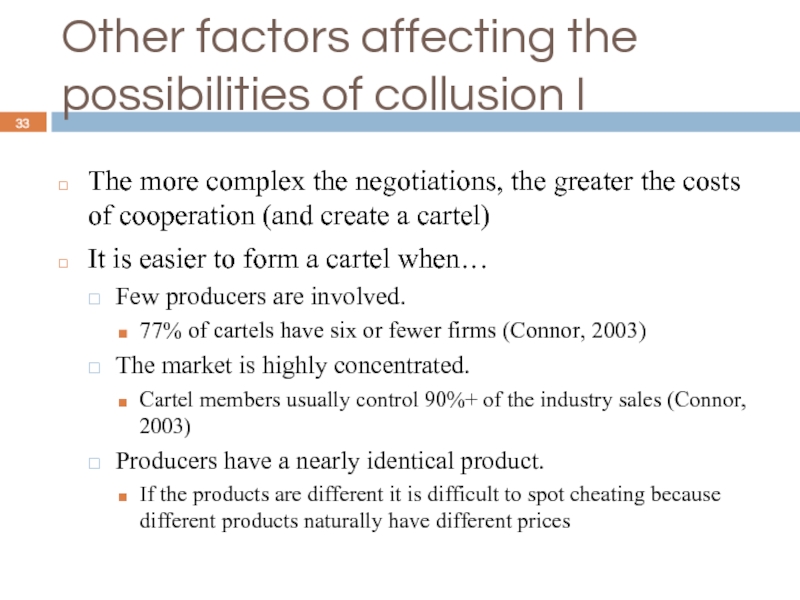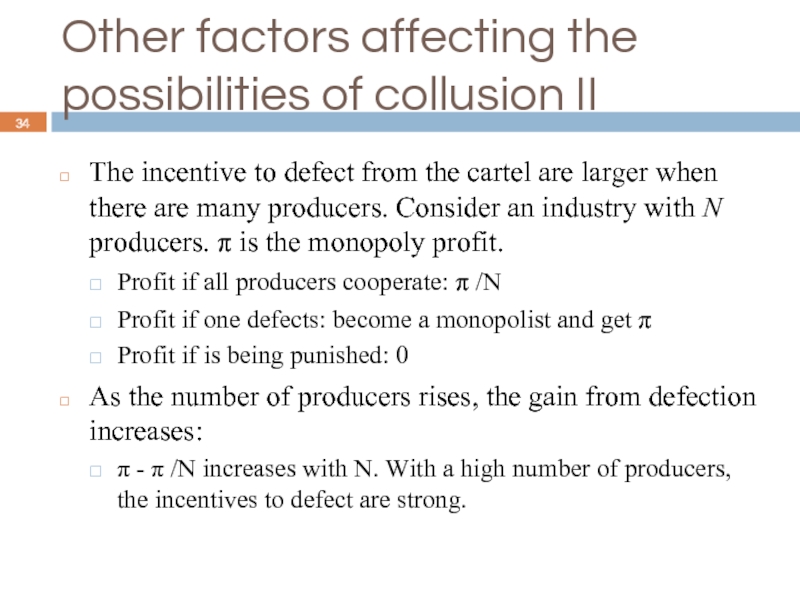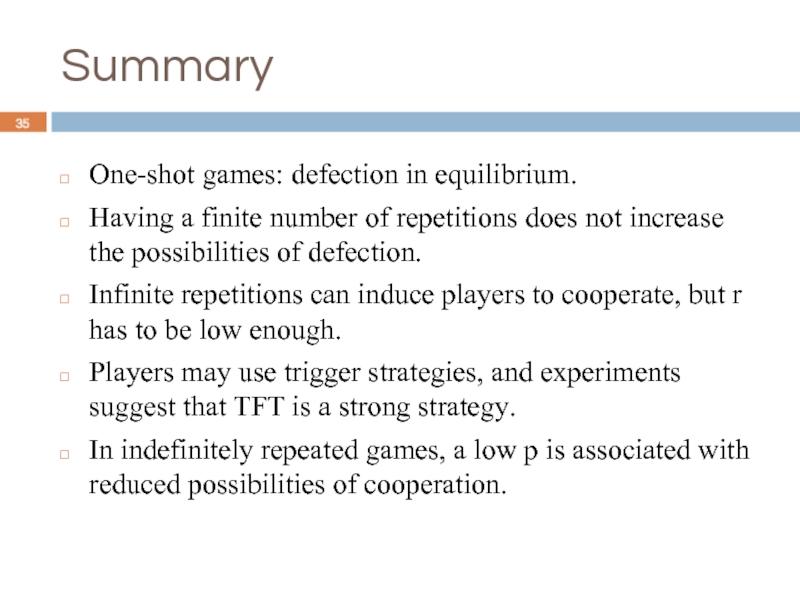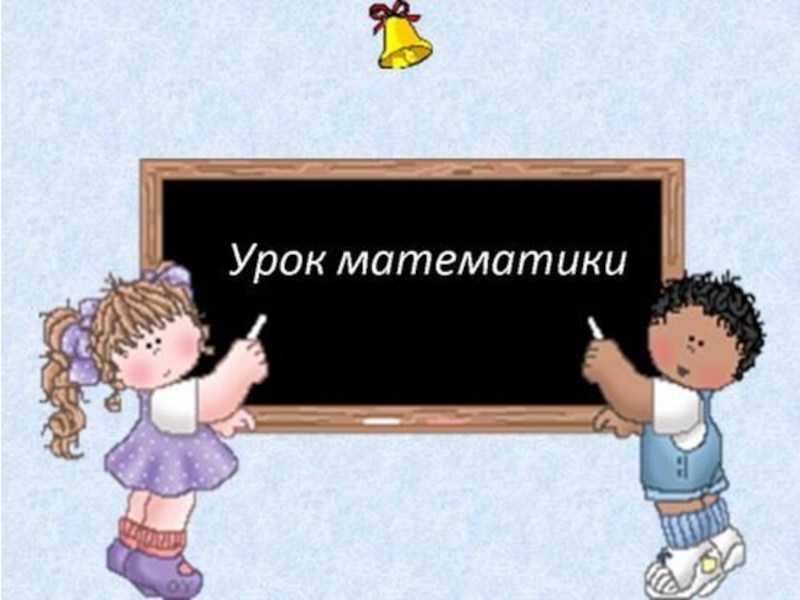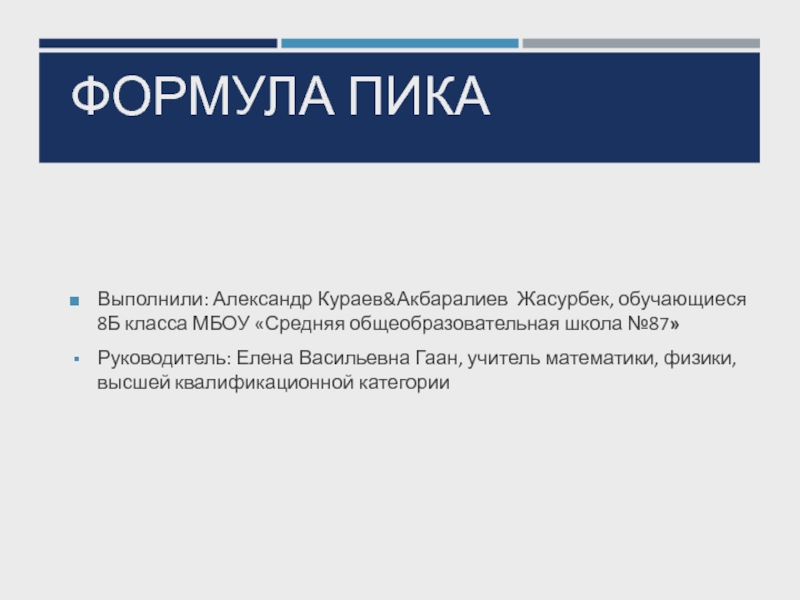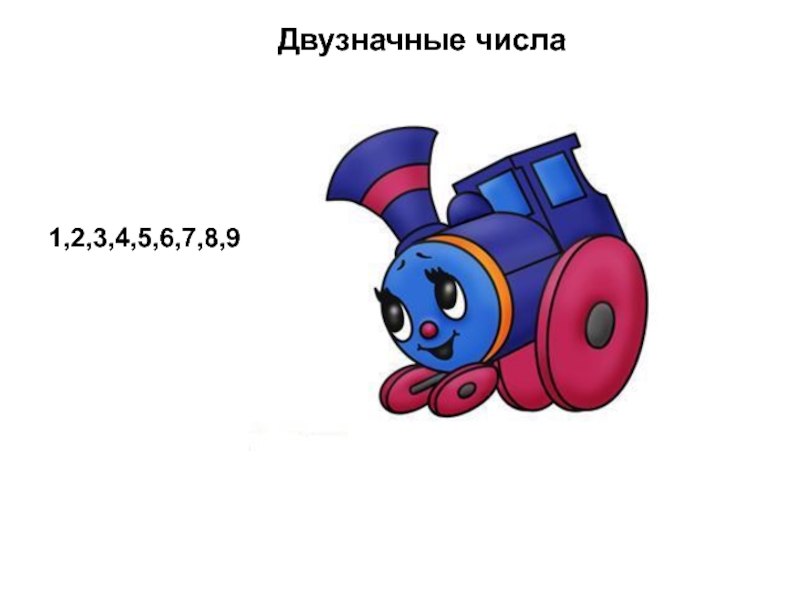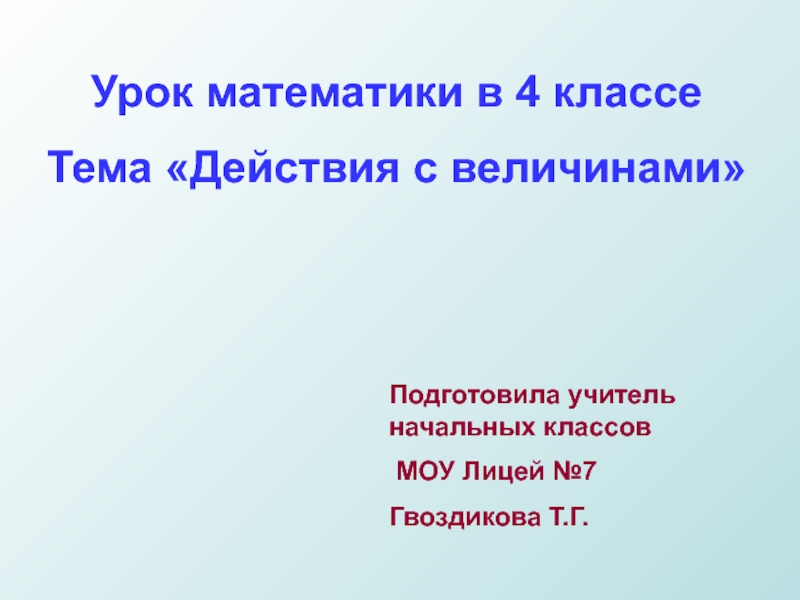- Главная
- Разное
- Дизайн
- Бизнес и предпринимательство
- Аналитика
- Образование
- Развлечения
- Красота и здоровье
- Финансы
- Государство
- Путешествия
- Спорт
- Недвижимость
- Армия
- Графика
- Культурология
- Еда и кулинария
- Лингвистика
- Английский язык
- Астрономия
- Алгебра
- Биология
- География
- Детские презентации
- Информатика
- История
- Литература
- Маркетинг
- Математика
- Медицина
- Менеджмент
- Музыка
- МХК
- Немецкий язык
- ОБЖ
- Обществознание
- Окружающий мир
- Педагогика
- Русский язык
- Технология
- Физика
- Философия
- Химия
- Шаблоны, картинки для презентаций
- Экология
- Экономика
- Юриспруденция
Repeated games. (Lecture 6) презентация
Содержание
- 1. Repeated games. (Lecture 6)
- 2. Introduction Lectures 1-5: One-shot games The game
- 3. Introduction Players may behave differently when a
- 4. A model of price competition Two firms
- 5. A model of price competition The equilibrium
- 6. Finite repetition Games where players play the
- 7. Finite repetition When a one-shot game with
- 8. Infinite Repetition What if the interaction never
- 9. Trigger Strategies Tit-for-tat (TFT): choose the action
- 10. Trigger Strategies Grim strategy: cooperate until the
- 11. Trigger Strategies Tit-for-Tat is most forgiving shortest
- 12. Firm 1 Firm 2
- 13. Infinite repetition and defection Is it worth
- 14. Infinite repetition and defection If Firm 1
- 15. Discounting future payoffs Recall from the
- 16. Discounting future payoffs Considering an infinitely repeated
- 17. Defection? Defecting once vs. always cooperate against
- 18. Defection? When r is high (r>minimum{1,2}, i.e.
- 19. Games of unknown length Interactions don’t last forever: Suppose there is a probability p
- 20. Games of unknown length The effective rate
- 21. Games of unknown length We found that
- 22. Example with asymmetric payoffs Firm 1 Firm 2
- 23. Example with asymmetric payoffs Firm 1: no
- 24. Example with asymmetric payoffs Firm 2: Defect
- 25. Experimental evidence from a prisoner’s dilemma game
- 26. The Axelrod Experiment: Assessing trigger strategies
- 27. The Axelrod Experiment: Assessing trigger strategies
- 28. The Axelrod Experiment: Assessing trigger strategies
- 29. q1 q2 NE=(240,240) Cournot in repeated games (180,180)
- 30. Cournot in repeated games In a one-shot
- 31. Cournot in repeated games How to reconcile
- 32. Cournot in repeated games High p also
- 33. Other factors affecting the possibilities of collusion
- 34. Other factors affecting the possibilities of collusion
- 35. Summary One-shot games: defection in equilibrium. Having
Слайд 2Introduction
Lectures 1-5: One-shot games
The game is played just once, then the
Players have a short term horizon, they are opportunistic, and are unlikely to cooperate (e.g. prisoner’s dilemma).
Firms, individuals, governments often interact over long periods of time
Oligopoly
Trade partners
Слайд 3Introduction
Players may behave differently when a game is repeated. They are
Types of repeated games:
Finitely repeated: the game is played for a finite and known number of rounds, e.g. 2 rounds/repetitions.
Infinitely: the game is repeated infinitely.
Indefinitely repeated: the game is repeated for an unknown number of times. The interaction will eventually end, but players don’t know when.
Слайд 4A model of price competition
Two firms compete in prices. The NE
They could obtain a higher payoff by cooperating (Prisoner’s dilemma situation)
Firm 1
Firm 2
Слайд 5A model of price competition
The equilibrium that arises from using dominant
Why does defection occur?
No fear of punishment
Short term or myopic play
What if the game is played “repeatedly” for several periods?
The incentive to cooperate may outweigh the incentive to defect.
Слайд 6Finite repetition
Games where players play the same game for a certain
Nash Equilibrium:
Each player will defect in the very last period
Since both know that both will defect in the last period, they also defect in the before last period.
etc…until they defect in the first period
Defect
Defect
Defect
Defect
Defect
Defect
Defect
Defect
Defect
Defect
Player 1
Player 2
Слайд 7Finite repetition
When a one-shot game with a unique PSNE is repeated
BUT…finitely repeated games are relatively rare; how often do we really know for certain when a game will end? We routinely play many games that are indefinitely repeated (no known end), or infinitely repeated games.
Слайд 8Infinite Repetition
What if the interaction never ends?
No final period, so no
Players may be using history-dependent strategies, i.e. trigger/contingent strategies:
e.g. cooperate as long as the rivals do
Upon observing a defection: immediately revert to a period of punishment (i.e. defect) of specified length.
Слайд 9Trigger Strategies
Tit-for-tat (TFT): choose the action chosen by the other player
Defect
Defect
Cooperate
Cooperate
Defect
Defect
Defect
Defect
CONDITIONAL COOPERATION
RECIPROCITY
Слайд 10Trigger Strategies
Grim strategy: cooperate until the other player defects, then if
Defect
Defect
Defect
Defect
Defect
Слайд 11Trigger Strategies
Tit-for-Tat is
most forgiving
shortest memory
proportional
credible
Grim trigger is
least forgiving
longest memory
not proportional
adequate deterrence but lacks credibility
Слайд 13Infinite repetition and defection
Is it worth defecting? Consider Firm1.
Cooperation:
Firm 1 defects:
If Firm 2 plays TFT, it will also defect next period:
324
324
324
324
324
324
324
324
324
324
360
216
defect
Слайд 14Infinite repetition and defection
If Firm 1 keeps defecting:
If Firm 1 reverts
If defection, trade-off defection - return to cooperation
360
216
288
288
288
288
288
288
288
288
360
216
360
216
324
324
324
324
324
324
Gain: 36
Loss: 108
Gain: 36
Loss: 36
Loss: 36
Loss: 36
Loss: 36
Слайд 15Discounting future payoffs
Recall from the analysis of bargaining that players discount
r is the interest rate
Invest $1 today → get $(1+r) next year
Want $1 next year → invest $1/(1+r) today
For example, if r=0.25, then δ =0.8, i.e. a player values $1 received one period in the future as being equivalent to $0.80 right now.
Слайд 16Discounting future payoffs
Considering an infinitely repeated game, suppose that an outcome
Present value of $1 every period (starting from next period):
Слайд 17Defection?
Defecting once vs. always cooperate against a TFT player. Gain 36
Defect if:
Defecting forever vs. always cooperate against a TFT player. Gain 36 in period 1; Lose 36 every period ever after.
Defect if:
Слайд 18Defection?
When r is high (r>minimum{1,2}, i.e. r>1 in this example), cooperation
When future payoffs are heavily discounted, present gains outweigh future losses.
Cooperation is sustainable only if r<1, i.e. if future payoffs are not too heavily discounted.
Lesson: Infinite repetition increases the possibilities of cooperation, but r has to be low enough.
Слайд 19Games of unknown length
Interactions don’t last forever: Suppose there is a
present value of 1 tomorrow is
Future losses are discounted more heavily than in infinitely repeated games, because they may not even materialize. Cooperation is more difficult to sustain when p<1 than when p=1.
Слайд 20Games of unknown length
The effective rate of return R is the
i.e. the discount factor δ is lower when p<1.
R>r, and future payoffs are more heavily discounted, which decreases the possibilities of cooperation.
Слайд 21Games of unknown length
We found that the condition for defecting against
e.g. suppose that r=0.05 → no defection
Now assume that there is each period a 10% chance that the game stops: p=0.90.
→ R=0.16 (still <1, hence no defection)
If instead p=0.5, then R=1.1, and there is defection (1.1>minimum{1,2}).
Слайд 23Example with asymmetric payoffs
Firm 1: no change
Defect once better than cooperate
Defect forever better than cooperate if:
Слайд 24Example with asymmetric payoffs
Firm 2:
Defect once better than cooperate if:
Defect forever
Cooperation may not be stable when r>0.66
Слайд 25Experimental evidence from a prisoner’s dilemma game
From Duffy and Ochs (2009),
Initially 30% of players cooperate, and this increase to 80% with more repetitions. Trust between players increases over time and fewer of them defect.
Слайд 26The Axelrod Experiment:
Assessing trigger strategies
Axelrod (1980s) invited selected specialists to
Strategies specified for 200 rounds.
TFT obtained the highest overall score in the tournament.
Why did TFT win?
TFT's can adapt to opponents. It resists exploitation by defecting strategies but reciprocates cooperation.
Programs that defect suffer against TFT programs.
Programs that never defect lost against programs that defect.
Слайд 27The Axelrod Experiment:
Assessing trigger strategies
In another experiment, some “players” were
The programs that do well “reproduce” themselves and gain in population. The losing programs lose population.
After 1000 rounds, TFT accounted for 70% of the population.
TFT does well against itself and other cooperative strategies.
Defecting strategies fare badly when their own kind spreads, and against TFT.
Слайд 28The Axelrod Experiment:
Assessing trigger strategies
According to Axelrod, TFT follow the
“Don’t be envious, don’t be the first to defect, reciprocate both cooperation and defection, don’t be too clever.”
Folk theorem: two TFT strategies are best replies for each other (i.e. it is a Nash Equilibrium).
However, other Nash equilibria also exist, and may involve defecting strategies.
Слайд 30Cournot in repeated games
In a one-shot Cournot game, the unique NE
Cartels do form, and governments may have to intervene to prevent cartel formation. Some cartels are unstable, but some are stable.
Слайд 31Cournot in repeated games
How to reconcile the Cournot model with the
Repetition increases the possibilities of cooperation, provided that producers attach sufficient weight on future payoffs (low r).
“Short-termism” makes cartels less stable.
Слайд 32Cournot in repeated games
High p also helps.
Cartels are more likely to
e.g. OPEC. The list of oil exporting countries is unlikely to change much over the next decades.
In “dynamic” industries, where market shares quickly change, collusion is less stable.
Слайд 33Other factors affecting the possibilities of collusion I
The more complex the
It is easier to form a cartel when…
Few producers are involved.
77% of cartels have six or fewer firms (Connor, 2003)
The market is highly concentrated.
Cartel members usually control 90%+ of the industry sales (Connor, 2003)
Producers have a nearly identical product.
If the products are different it is difficult to spot cheating because different products naturally have different prices
Слайд 34Other factors affecting the possibilities of collusion II
The incentive to defect
Profit if all producers cooperate: π /N
Profit if one defects: become a monopolist and get π
Profit if is being punished: 0
As the number of producers rises, the gain from defection increases:
π - π /N increases with N. With a high number of producers, the incentives to defect are strong.
Слайд 35Summary
One-shot games: defection in equilibrium.
Having a finite number of repetitions does
Infinite repetitions can induce players to cooperate, but r has to be low enough.
Players may use trigger strategies, and experiments suggest that TFT is a strong strategy.
In indefinitely repeated games, a low p is associated with reduced possibilities of cooperation.
